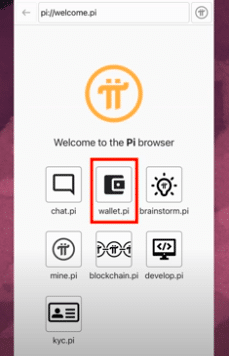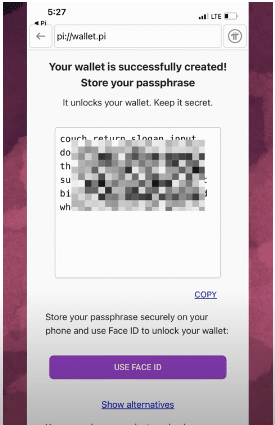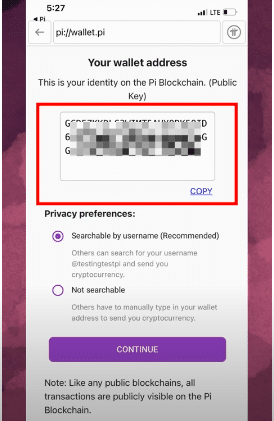Pi Network continues its exciting journey with its revamped Pi Wallet and as it moves closer to its Mainnet migration, every Pioneer needs to grasp how to create, use, and secure their Pi Wallet effectively. This comprehensive guide breaks down everything you need to know about the pi wallet for seamless transactions and robust security.
Creating your Pi Wallet
Access the Pi Browser:
Open the Pi Network mining app, tap the menu icon (three horizontal lines) in the upper left corner, and select “Pi Browser.” Next, choose “Sign into Pi Browser.”
Download the Pi Broswser App:
If you haven’t installed it yet, download the Pi Browser the iOS App Store or Google Play Store. This app is crucial for accessing Pi Network’s ecosystem, including managing your transactions.

Generate your Wallet:
In the Pi Browser, go to the Pi Directory and select “Wallet.pi.” Tap “Generate Wallet” and ensure you complete this process without navigating away. Your wallet and passphrase will be generated here.

Securing your Wallet
Safeguard your Passphrase:
Your passphrase is the key to accessing your wallet. Pi Network does not store it, so losing it means losing access to your assets. Use biometric features like Face ID or fingerprint for ease of access, but remember that these won’t transfer if you lose your phone.
Keep your Passphrase Private:
Never share your passphrase with anyone. The wallet address is your public identity on Pi blockchain (Public Key). Only share your public Wallet address, which is used for receiving Pi or interacting with your wallet.

Navigating your Wallet
Login: After setting up, return to the Pi Browser, tap “Pi Wallet,” and log in using your passphrase or biometric authentication.
Receiving Pi: To receive Pi, copy your public Wallet address from the Wallet interface and share it with others.
Sending Pi: Input the recipient’s wallet address and the amount to transfer. Be cautious to avoid sending Pi to the wrong address. Transactions incur a minimum fee of 0.01 Pi, adjustable based on network congestion.
Test Transactions: Practice with the Testnet wallet by sending Test-Pi, which holds no real value.
What to do if your Pi Wallet gets Hacked?
With the surge in Pi coin activity, scams and hacking attempts have increased. Here’s how to handle such situations:
If you sent Pi coins to a Scammer:
Unfortunately, if you’ve sent Pi to a scammer, there’s no way to recover your funds. This highlights the importance of cautious transactions. Your wallet remains secure, and you can continue to receive coins from future migrations.
If you shared your Passphrase:
If you have shared your passphrase or entered it on a suspicious site, follow these steps:
- Create a new wallet – Open the Pi Browser, navigate to the wallet section, and set up a new wallet. Back up your new passphrase securely.
- Update your wallet – In the Pi Network app, confirm your new wallet by entering passphrase in the mainnet checklist.
- Monitor your old wallet – Transfer any remaining coins from your old wallet to the new one before the scammer can access them.
Avoiding future scams:
Always verify you are on the legitimate Pi Network website, which should end in “.com” (e.g., wallet.pi.com). Avoid deceptive sites with similar names.
Recovering your Passphrase
Securing your passphrase:
Initially, keep your passphrase secure. Use your device’s biometric features for ease but note that these won’t help in recovering your passphrase.
Accessing your passphrase:
If you’ve forgotten your passphrase but can still access your wallet via biometric authentication, view it through the wallet’s settings.
Reacting your passphrase:
If your Pi is migrated and connected to the mainnet, be cautious when recreating your wallet. Disconnect from the mainnet, recreate your wallet, and reconnect it.
Migrating your passphrase:
After setting up your new wallet, use the migration feature to transfer Pi from the testnet to the mainnet.
With this guide, you’re equipped to create, manage, and secure your Pi Wallet, ensuring a smooth experience as you engage with the Pi Network. Also always remember to DYOR before interacting with anything.
Also Read: What to Expect From the Pi Network Mainnet?








